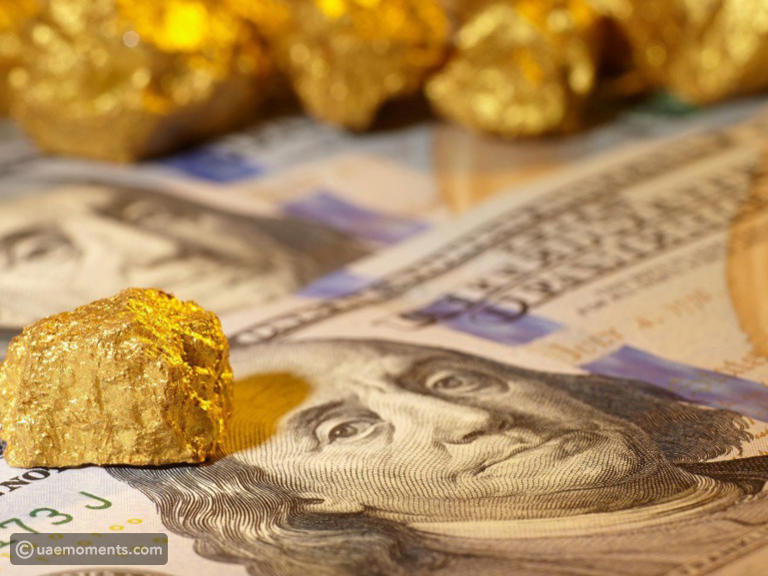Gold prices faced a notable decline on Monday as they struggled to maintain their position above critical resistance levels. In midday trading, gold fell below the $2,400 per ounce threshold, registering a decrease of $5.09 to $2,383 per ounce. This retreat comes after a challenging week for bullion, where prices encountered persistent pressure and were unable to sustain upward momentum.
The broader precious metals market reflected similar trends, with silver continuing its downward slide. The price of silver dropped by $0.40, settling at $27.70 per ounce. This ongoing weakness in silver is part of a larger pattern impacting the commodity sector, influenced by a mix of global and economic factors.
Several key factors have contributed to the tight trading range for gold and silver. Firstly, the strengthening U.S. dollar has played a significant role in putting downward pressure on gold prices. As the dollar gains strength, gold, which is priced in dollars, becomes more expensive for investors holding other currencies. This reduces gold’s appeal as an investment and contributes to its price decline.
Additionally, geopolitical tensions have added to the market’s uncertainties. Concerns about potential escalations in the Middle East, particularly regarding Lebanon’s possible involvement in regional conflicts, have impacted investor sentiment. Such geopolitical risks often drive shifts in commodity markets as investors seek safe-haven assets like gold. However, in the current environment, these risks have not provided the expected support for gold prices.
Another crucial factor is the decline in Chinese bullion demand. According to a recent quarterly report from the China Gold Council, there has been a nearly 6% drop in gold demand compared to the previous year. This decline is attributed to fears of an economic slowdown in China, which has led to reduced consumption of gold. Moreover, the People’s Bank of China halted its gold purchases in May and June after an 18-month period of buying, further impacting global demand for the metal.
Looking ahead, market participants are closely watching the upcoming Federal Open Market Committee (FOMC) meeting, scheduled for Wednesday. This meeting is expected to provide significant insights into future monetary policy and economic conditions. Recent economic reports have shown unexpected strength in economic activity for June, alongside a 0.2% increase in the core Personal Consumption Expenditures (PCE) index for the previous month. This rise was above the projected 0.1% increase, indicating higher-than-expected inflation pressures. Additionally, the core inflation rate has remained steady at 2.6% for two consecutive months, surpassing the forecasted 2.5%.
The Federal Reserve is anticipated to maintain the benchmark interest rate at its current level of 5.25%-5.5% during this meeting. However, there is speculation that the Fed may consider rate easing by September, depending on future economic developments and inflation trends. This potential shift in monetary policy could significantly influence market dynamics and investor behavior.
In addition to the FOMC meeting, several other key economic reports are expected to provide further insights into the health of the economy. These include data on consumer confidence, which will offer insights into spending behavior and sentiment; job market reports, which will shed light on employment and unemployment trends; U.S. productivity figures, measuring labor efficiency and economic output; and manufacturing indicators, reflecting the state of industrial activity.
These forthcoming reports will play a crucial role in shaping the economic landscape and influencing investment decisions. As the week progresses, the interplay of these factors will likely continue to drive volatility in precious metals and broader financial markets, affecting investor strategies and market outlooks.
